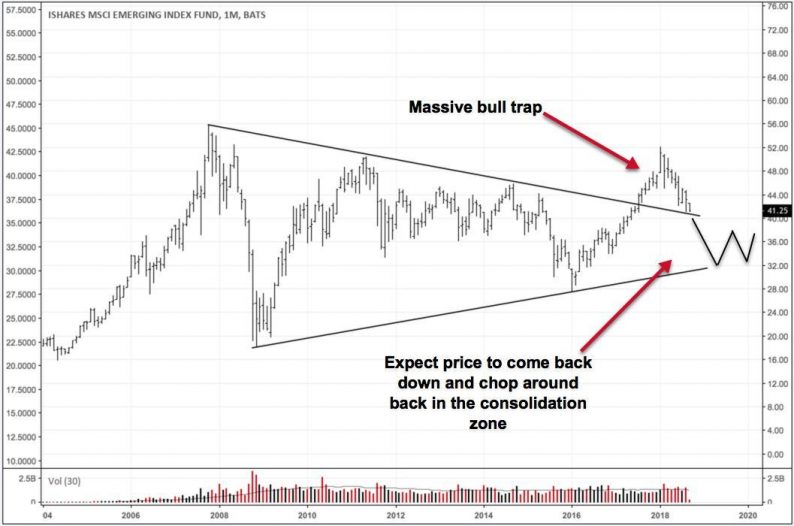In our most recent MIR we talked briefly about the growth struggles of EM in the context of the Gerschenkron Growth model, using China as our example.
Our conclusion was that China, and EM in general, is set to be a dead money trade and massive value trap for the remainder of this cycle.

So let’s flesh out a little more why this is likely to be the case.
To start, what exactly separates an emerging market from a developed one? Here’s a good explanation from Eric Lonergan writing on his blog Philosophy of Money (emphasis by me).
Emerging markets are not poor countries, nor are they countries which are making economic progress. They are defined by a very specific set of macroeconomic properties, which financial markets are conscious of, but are rarely clearly articulated.
The overriding characteristic of an emerging market is that a currency devaluation is a tightening of policy. In the developed world, a devaluation is typically an economic stimulus, indeed it often coincides with an easing of monetary policy through lower interest rates or an increase in QE. The post-Brexit policy response of the Bank of England is a case in point – sterling fell sharply and the Bank cut interest rates and initiated more QE.
In emerging markets the opposite occurs. These economies usually have public and private sector liabilities denominated in a currency which they do not issue. So when the Turkish Lira falls against the dollar the burden of finance on many Turkish corporates increases. Due to their US dollar liabilities, the interest payments and capital repayments in Turkish Lira rise. That is the first way in which a devaluation is a tightening of monetary conditions.
The second mechanism is more instructive and carries important lessons for monetary reform in the developed world, and in particular how we should think about the challenges posed by the zero-bound.
Emerging markets suffer from widespread price indexation and significant inflation expectations. In other words, when the currency falls, inflation rises, and when inflation rises the economic system attempts to respond by raising wages, and then raising prices. The 1970s concept of a wage-price spiral has meaning.
Because emerging markets have widespread wage and price indexation and alert inflation expectations central banks cannot exploit ‘temporary’ increases in the inflation rate by reducing real interest rates and stimulating demand, as they do in the developed world. Central banks, as we have seen in Brazil, Turkey and South Africa, have to respond to devaluations by tightening policy in order to prevent an increase in the underlying inflation rate.











Leave A Comment